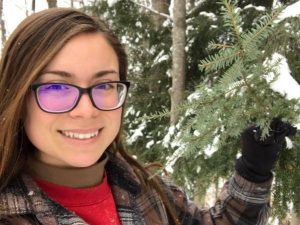Hemlock woolly adelgid (HWA) is an invasive insect threatening hemlock forests throughout eastern North America. Early detection of this pest remains a key focus for management groups to ensure rapid response to control and stop the spread of HWA. Genetic approaches have been advancing as an affordable, efficient option to detect invasive species through methods such as environmental DNA (eDNA) techniques that can identify the presence of targeted species from the genetic material organisms shed into soil, water, or even air. In this presentation, guest Meg Sanders highlights research from her Master’s thesis that worked to develop and test the efficiency of airborne eDNA sampling techniques as a monitoring tool for HWA. This technology showed to be very promising and could be a useful tool for land managers to detect this invasive insect as early as possible and enact control measures quickly.

Novel detection technology for hemlock woolly adelgid
Webcast Video
Guests

Meg Sanders
Wisconsin Department of Agriculture, Trade and Consumer Protection
Plant Pest and Disease Specialist & Forest Pest Regulatory Coordinator
Meg Sanders is a Plant Pest and Disease Specialist with the Wisconsin Department of Agriculture, Trade and Consumer Protection (DATCP) overseeing plant product inspections in northern Wisconsin to help ensure the sale of healthy, pest-free plants in and out of the state. She also operates as the Forest Pest Regulatory Coordinator in this role enforcing quarantines to stop the introduction of invasive plant pests and diseases into the state. Meg’s background is in Ecology having worked with a variety of both plant and animal life in Georgia, Kansas, and Michigan before settling in Wisconsin. Previously, she conducted research focused on developing novel detection methods for the invasive hemlock woolly adelgid (HWA) while obtaining her Master’s from Grand Valley State University in Michigan, and now she works to prevent the introduction of this pest to Wisconsin.